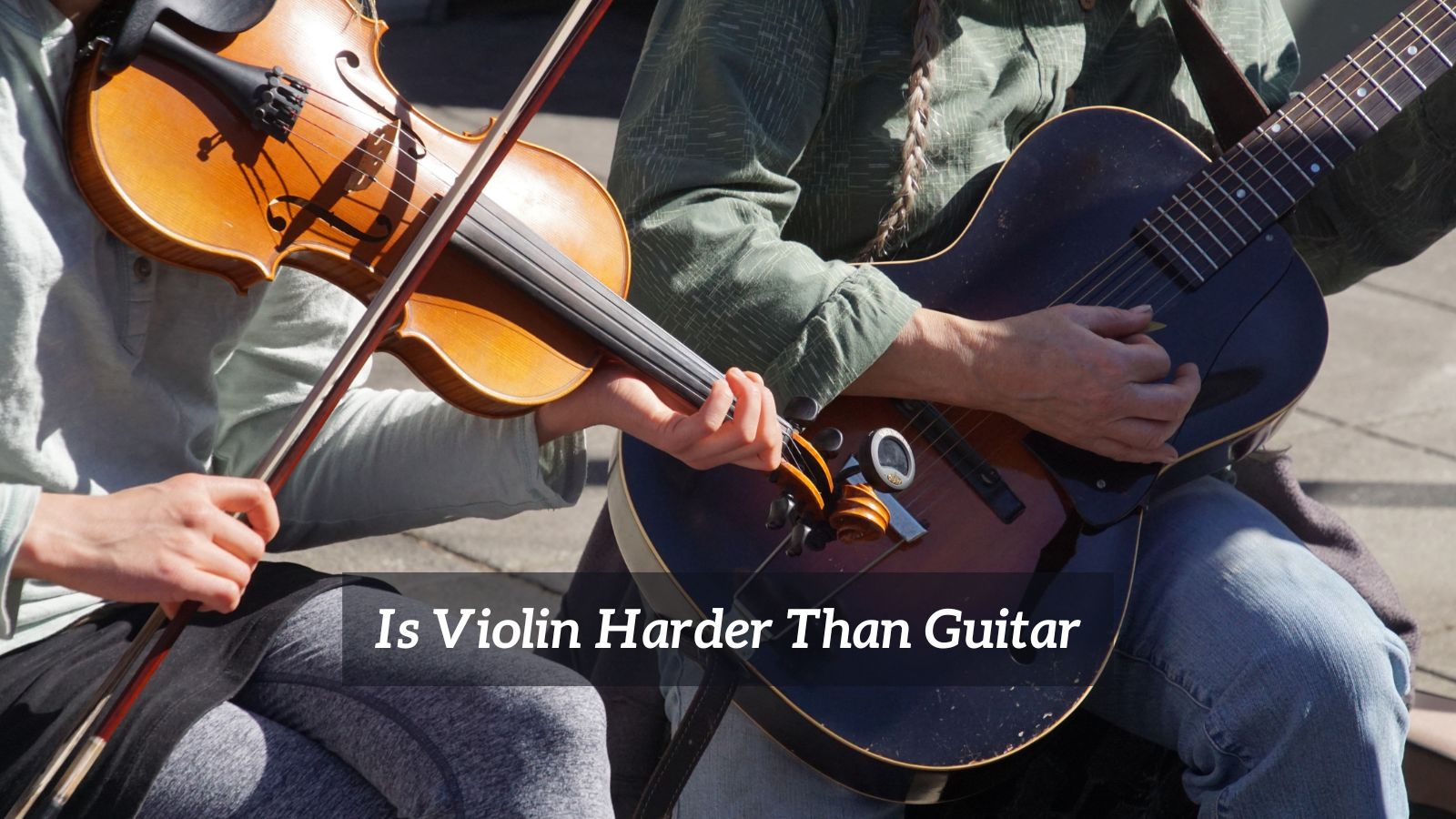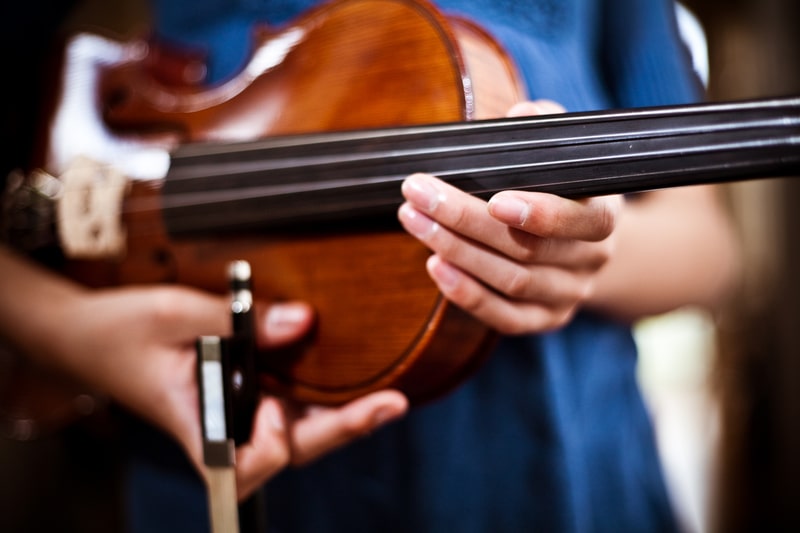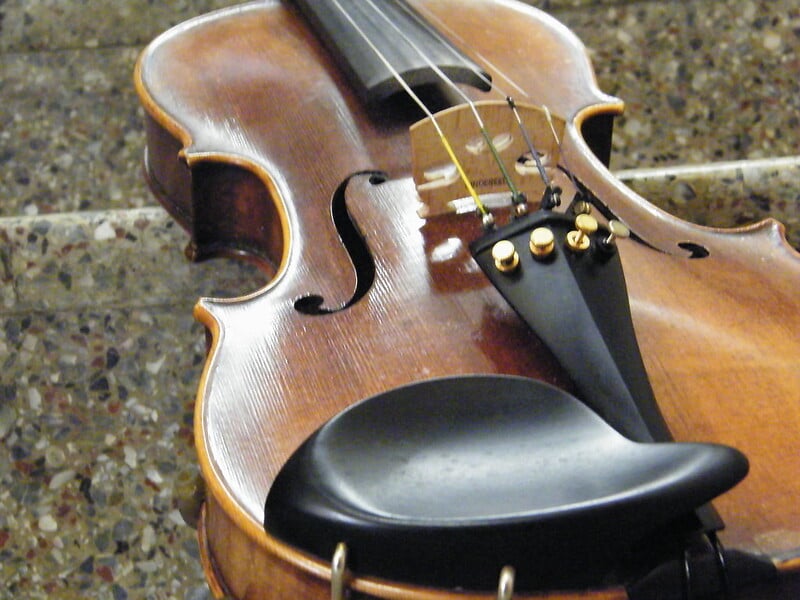
In today’s article we make a comparison on the level of difficulty of two of the most popular instruments among music learners: the guitar and the violin.
In order to find out which is the hardest one, we talked to some multi-instrumentists and heard their opinions – now we have the answer. Stay with us and find it out!
First, let’s see what both instruments share in common:
Stringed instruments
Both are stringed instruments. It means that the production of their sound happens through the vibration of the strings – unlike a trombone, for example, which depends on the vibration of the lips of the instrumentist.
Made out of wood
Both are made of wood. Not only that, they are built with the same types of wood: maple and spruce, most commonly, so as to have a good volume and quality of sound.
Resonance box
Both have a resonance box, which naturally amplify the sound produced by the strings. The guitar usually has a circle-shaped opening from where the sound comes out, and violins have the finely shaped f-holes, which also gives a special charm to them.
Fingering
Violinists use their left hand to reach the desired pitches and right hand to actually produce the sound. Guitar players do the same, although some left-handed guitar players tend to switch sides, which is not common in the violin world.
Given these similarities, those who play the guitar will have at least some familiarity when learning the violin. The same is true for the violinists who want to learn to play the guitar. Now let’s take a look at their main differences:
Number of strings
The violin has only four strings whereas the guitar has six strings. Although both can use steel strings, the classical version of the guitar can also have nylon strings.
Fingerboard
Guitars have frets in the fingerboard, which are those small metal bars that mark where each note is played. Because of this, it is not possible to do a continuous glissando or vary the pitch of each note so easily as in the violin.
The violin, on the other hand, has a fretless fingerboard. The violinist must develop a good muscle memory and good aural skills in order to know where to put the fingers with great precision.
Bowing vs. plucking
Although both are stringed instruments, the way the strings are put into vibration are different. The hair in the bow of the violinists is not absolutely smooth, thus causing a constant friction when touching the strings.
This friction is what makes the string vibrate and produce the sound. In the case of the guitar, players need to either use their nails – standard in classical style – or use a pluck in order to make the strings vibrate.
For those who do not know, the pluck is a small piece of wood, plastic that many guitar players use to hit the strings.
Placement of the instrument
The guitar is placed on top of the legs – left leg, if a classical player, right leg if not a classical guitarist.
The violin, in turn, rests on the shoulder of the player. That is already a big difference since different sets of muscles needs to be used when playing each instrument.
Chords
The violin usually plays the melody and can sing only one or two notes at a time. It is possible to play chords on the violin but they can not be sustained because the fingerboard of the violin is curved, so the bow can not rest on more than two strings at a time.
Guitar players, in turn, play chords very often. Because the guitar is able to sustain chords, it is very suitable for performing accompaniments.
Tablature/Chords
The system of notation differ for each instrument. Although classical guitarists do read sheet music, popular guitar players usually read chord symbols and/or tablatures.
In the latter case, it is a matter of simplifying the complex notation of chords on a sheet music. Violin players, on the other hand, read mainly the traditional sheet music.
Is Violin Harder Than Guitar?
Specialists agree that the violin has more complexities, as follows:
Finding the correct pitch
It takes a lot of training to develop extreme precision on hitting the correct pitches on the violin. A mistake of a fraction of an inch can be disastrous. The player needs to be able to hit the correct pitch without looking at the instrument by developing a very good tactile memory.
Bowing techniques
There are many bowing techniques that can be challenging even for advanced players and that appear in many songs such as the slurs (more than one consecutive per bowing), spiccato, sautille, ricochet, martelé – all of these special techniques for playing short notes – and many others etc.
For the guitar, the number of different techniques is not that big and the most difficult ones such as the tremolo (meaning quick repetitions of the same note) can be acquired at an earlier stage.
Comfort
The violin itself requires the player to have a strong muscles to stand hours of practice with both arms up. Resistance is acquired through months of practice.
Absolute beginners can not stand long practice sessions without taking multiple breaks or they may face serious back and or neck pain. Thus, finding the right accessories to support the violin is very important but is usually not an easy task.
Good chin rests and shoulder rests can be very expensive, and finding the perfect combination that will fit the player’s body may take many years of personal research.
Conclusion
It takes many years to master each instrument in order to produce a perfect and beautiful sound.
However, given the level of difficulty to obtain a good bow control and keep a perfect intonation, the process of learning the violin is a bit more complex an takes a considerable bigger amount of time.
The guitar can be equally difficult if pushed to its limits: complex chords and pattern combinations, polyphonic repertoire, long stretches of fingers, etc., but on the basic level we can definitely say that the violin is the hardest one.



To play either of these two instruments to the highest level requires similar effort. One is not more difficult they are both equally difficult in my opinion.